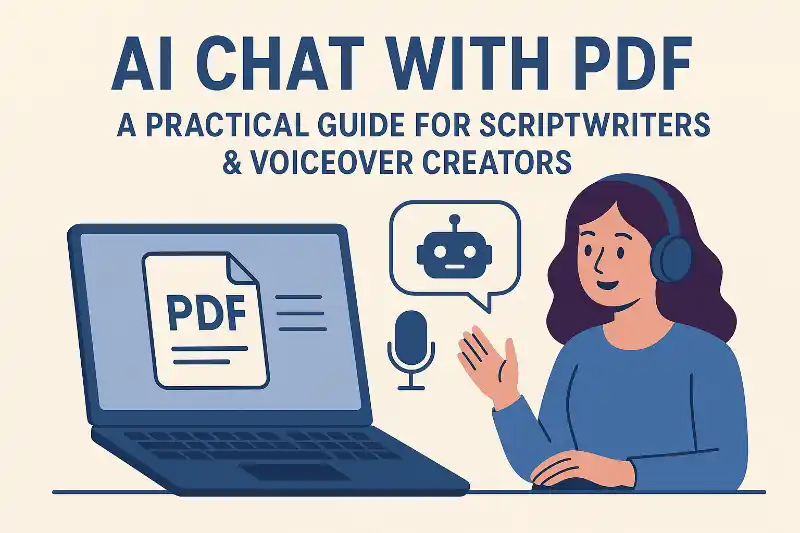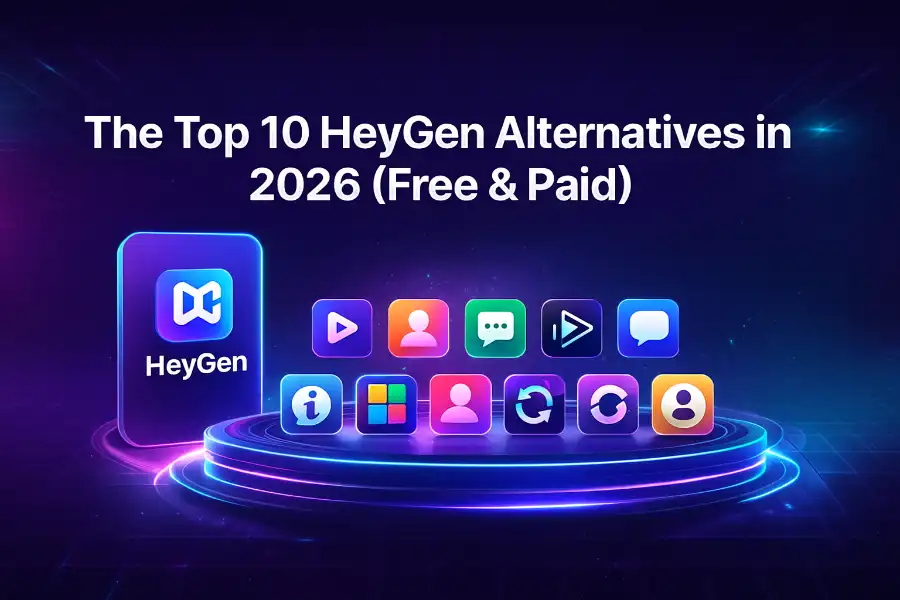What is the Best Free Text to Speech App for Mandarin Chinese?
TL;DR
Introduction: Why Video Marketing Matters
Okay, so you might be wondering if video marketing is really worth the hype. Honestly, I get it – there's a lot of noise out there. But trust me on this one, video is where it's at.
Let's face it, people are lazy, and attention spans are shrinking. (Human attention span and why you should pay attention to it) Video grabs eyeballs like nothing else. (Record Without a Teleprompter - Descript's New Eye Contact Feature)
- Higher engagement rates: People would rather watch than read, right? (Why Some People Would Rather Read Than Watch | by Elena) Videos keep viewers glued, which results in higher engagement.
- Mobile domination: Everyone’s glued to their phones, and what do they watch? Videos! Making your content easily accessible is critical.
- Conveys complex info quickly: Explaining complicated stuff? Video does it faster and better than walls of text. Think explainer videos for SaaS products or quick tutorials for online courses.
As YouTube's influence continues to grow, it is more apparent that video is at the forefront of digital communication.
For instance, imagine a healthcare company using short videos to explain complicated medical procedures. Or a retail brand showcasing its products in action through engaging demos. Finance companies could use animated videos to simplify investment strategies, you know?
Search engines and social media platforms love video. They boost content that keeps people on their sites longer because it means users are spending more time on their platform.
So, now that we've covered why video marketing is essential, let's jump into the different types you can create.
The Big List: 22 Types of Marketing Videos
Alright, buckle up, because we're diving deeper into the video vortex! You might be surprised how many different kinds of marketing videos are actually out there.
Product Demos: These are pretty straightforward, showing off your product in action. Forget those boring spec sheets; let’s see it do something!
- Highlight key features. Don't just list them; show them working. Think about a software company doing a screen recording to walk through a new feature, or a clothing brand showcasing how their waterproof jacket holds up in a downpour.
- Solve real problems. Focus on how your product makes life easier, not just what it is. A home security company could demo their system preventing a simulated break-in, or a project management tool showing how it keeps teams on track.
- Real-world examples are key. Ditch the theory and get practical. A landscaping company can show before-and-after shots of a yard transformation, while a financial advisor can walk through a retirement plan they built for a client.
Testimonials: Nothing beats hearing from happy customers, right? Testimonials add a layer of trust that slick marketing can’t match.
- Authenticity is everything. Scripted testimonials? No thanks. Let customers speak from the heart. A restaurant could feature a regular gushing about their favorite dish, or a dentist sharing how they overcame their fear of dental work.
- Focus on benefits, not just features. What did the customer gain? A tutoring service might showcase a student whose grades soared, or a moving company sharing how they reduced the stress of relocation.
- Variety is the spice of life. Get different viewpoints. A SaaS company could feature a ceo talking about roi, a project manager praising ease of use, and an end-user raving about customer support.
Brand Videos: These are all about connecting with your audience on an emotional level. It's not about selling – it's about showing who you are.
- Share your values. What do you stand for? A sustainable fashion brand could highlight their ethical sourcing practices, or a local brewery could share their commitment to community events.
- Use high-quality visuals. Make it look good! A travel agency might showcase stunning drone footage of exotic destinations, while an architecture firm could create a time-lapse of a building coming to life.
- Show your personality. What makes you, you? A quirky ice cream shop could share a behind-the-scenes look at their wacky flavor creation process, or a law firm could show off their team's fun-loving side at a charity event.
Explainer Videos: These break down complex products or services into easy-to-understand visuals. Think animated characters or clear graphics walking viewers through a concept.
How-To/Tutorial Videos: Teach your audience something valuable, whether it's how to use your product, a skill related to your industry, or just a general helpful tip.
Behind-the-Scenes Videos: Give your audience a peek into your company culture, your process, or your team. This builds transparency and connection.
Customer Success Stories: Similar to testimonials, but often more in-depth, showcasing a customer's journey and how your product or service helped them achieve significant results.
Product Unboxing Videos: Popular for physical products, these videos show the excitement and experience of opening a new item for the first time.
Webinar Recordings: Repurpose your live webinars into on-demand video content for those who couldn't attend or want to revisit the information.
Event Videos: Capture the energy and highlights of conferences, workshops, or company events to share with a wider audience.
Company Culture Videos: Showcase what it's like to work at your company, attracting potential employees and humanizing your brand.
Case Studies: Present detailed examples of how your business has helped clients overcome challenges and achieve success.
Product Update/Announcement Videos: Inform your customers about new features, improvements, or upcoming releases.
FAQ Videos: Address common questions your customers have in a clear and concise video format, reducing customer support inquiries.
User-Generated Content (UGC) Videos: Encourage your customers to create and share videos featuring your product or service, then curate and share the best ones.
Social Media Ads: Short, engaging videos designed specifically for platforms like Facebook, Instagram, TikTok, and LinkedIn to capture attention and drive action.
Animated Videos: Use animation to explain concepts, tell stories, or create visually appealing content that might be difficult or expensive to film.
Live Videos: Engage with your audience in real-time, answering questions, hosting Q&As, or providing live updates.
Interactive Videos: Videos that allow viewers to make choices, click on elements, or participate in quizzes, leading to a more personalized experience.
Comparison Videos: Highlight the advantages of your product or service by comparing it to competitors or older versions.
Behind-the-Brand Videos: Focus on the people, passion, and purpose behind your brand, creating a deeper emotional connection.
"Day in the Life" Videos: Offer a realistic glimpse into the daily routines of your employees or the operational flow of your business.
Tips for Creating Effective Marketing Videos
So, you wanna make videos that actually work, huh? Well, turns out, it's not just about pointing a camera and hoping for the best. There's some actual stuff you gotta think about.
Alright, listen up, because this is where things get real. What works on tiktok is gonna flop on LinkedIn, and vice-versa. You just gotta know the rules of the game for each platform, y'know?
- Aspect Ratio: That portrait mode video that's killin' it on Instagram Reels? Yeah, it's gonna look tiny on YouTube. Make sure you have the right size settings.
- Video Length: Attention spans are short, people! Facebook ads need to be quick and punchy, while youtube viewers are usually willing to watch longer videos.
- Keywords: Don't just slap a random title on your video. Do some research! What are people actually searching for? You can use tools like Google Keyword Planner or even just type into YouTube's search bar and see what suggestions pop up. Use those keywords in your title, description, and tags. Think of it like seo for video, but, you know, less boring.
- Accessibility: Not everyone can hear your video, especially if there watching in public, so add captions and subtitles for accessibility.
Making your videos look and sound good doesn't have to break the bank. Good lighting, even natural light from a window, can make a huge difference. For audio, a simple lavalier microphone that clips onto your shirt can be way better than your phone's built-in mic. And editing? There are tons of free or affordable software options out there that can make your videos look polished.
See? Not rocket science, but it is important stuff.
Measuring the Success of Your Video Marketing Efforts
Alright, so you've been putting out videos – awesome! But how do you know if they're actually doing anything for your business? Just crossing your fingers ain't gonna cut it.
First, you gotta keep an eye on the basics. I mean, duh, views matter, but don't stop there.
- Watch time tells you if people are actually, you know, watching your stuff. A million views are useless if everyone bails after 5 seconds. Think about it: a healthcare provider might see longer watch times on videos explaining complex procedures, suggesting viewers find the content valuable. Engagement rate (likes, comments, shares) shows if your video is resonating. For example, a retail brand might see high engagement on videos showcasing user-generated content, indicating a strong community connection.
Then, dig a little deeper.
- Click-through rate (ctr) is super important, especially for ads. Are people clicking that shiny "Learn More" button? If not, something's wrong – your call to action might be weak, or your targeting might be off. And conversion rate? That's the real prize. Are those clicks turning into leads or sales? A finance company, for instance, would track how many viewers of an investment strategy video actually sign up for a consultation.
Are your videos turning viewers into paying customers?
- Lead generation and sales are the ultimate goals, right? Track how many leads your videos are pulling in. A SaaS company could use a form at the end of their explainer video to capture leads directly. And, of course, track those sales. Did you see a spike after launching that new product demo video? That's what I'm talking about.
Lastly, don't forget the big picture.
- Brand awareness and reach are kinda squishy, but still important. Are more people talking about your brand? Are you reaching a wider audience? Social listening tools can help you track mentions and sentiment. These tools monitor conversations across social media and the web to see what people are saying about your brand, competitors, or industry. Examples include Brandwatch, Sprout Social, or even Google Alerts for simpler tracking.
A recent report indicated that brands using video marketing experience 54% increase in brand awareness. (Source: This is a commonly cited industry statistic, often attributed to various marketing research firms.)
It's all about figuring out what you wanna achieve with your videos and then tracking the right numbers. Don't just make videos for the sake of making videos. Make 'em count!





